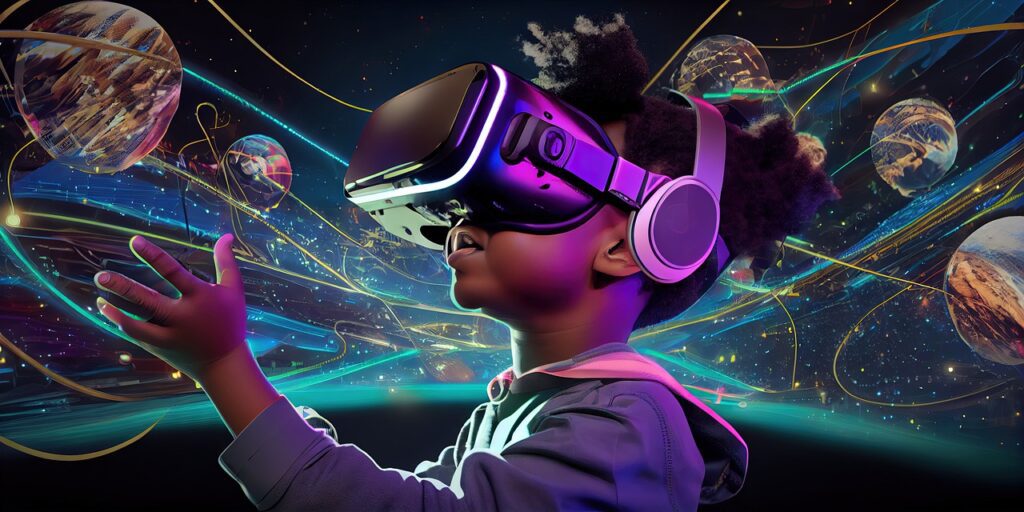Training programs are crucial for developing skills and knowledge in various domains. However, traditional training methods often struggle to keep participants motivated and engaged. This is where gamification comes in – a powerful approach that combines elements of gameplay with training to make the learning experience more enjoyable and effective. In this article, we will explore the concept of gamification, its benefits, and how it can transform training into a fun and engaging activity.
Introduction
Training is an essential component of personal and professional development, enabling individuals to acquire new skills and enhance their knowledge. However, the traditional methods used in training programs can often be monotonous and fail to capture participants’ attention and enthusiasm. Gamification offers a solution by leveraging the principles of game design to create an engaging and interactive learning experience.
What is Gamification?

Gamification is the process of incorporating game elements and mechanics into non-game contexts, such as training programs, to increase motivation and engagement. By tapping into the natural human inclination for play and competition, gamification transforms the learning process into an enjoyable and rewarding experience. It adds elements like challenges, rewards, leaderboards, and progression systems to motivate learners and provide a sense of achievement.
Benefits of Gamification in Training
Increased Motivation and Engagement
One of the key benefits of gamification in training is its ability to boost motivation and engagement. By introducing game elements, such as points, badges, and levels, learners are more likely to actively participate and invest themselves in the training process. The sense of achievement and progress gained through gamification encourages learners to stay committed and motivated to complete the training.
Enhanced Learning Retention
Gamification not only captures learners’ attention but also improves their learning retention. When information is presented in a gamified format, it becomes more memorable and easier to recall. The interactive nature of gamification allows learners to apply their knowledge in practical scenarios, reinforcing their understanding and enhancing long-term retention.
Real-World Application

Another advantage of gamification is its ability to bridge the gap between theoretical knowledge and real-world application. Through gamified simulations or scenarios, learners can practice skills in a safe and controlled environment, preparing them for real-life situations. This practical approach promotes active learning and ensures that learners are well-equipped to apply their newly acquired knowledge.
Elements of Effective Gamification
To create an effective gamified training experience, several elements should be considered during the design process.
Clear Objectives and Goals
Setting clear objectives and goals is essential in gamified training. Learners need to understand what they are working towards and how their progress is measured. Clearly defined goals provide a sense of purpose and direction, allowing learners to track their achievements and stay motivated throughout the training journey.
Progression and Rewards
Progression and rewards are crucial components of gamification. Learners should feel a sense of progression as they advance through the training. Unlocking new levels, earning badges, or reaching milestones provide a sense of accomplishment and motivate learners to continue their journey. Well-designed rewards, both intrinsic and extrinsic, help maintain engagement and reinforce positive behaviors.
Competition and Collaboration

Introducing elements of competition and collaboration can further enhance the gamified experience. Leaderboards, timed challenges, or team-based activities create a competitive environment that drives engagement and encourages learners to push themselves. Collaboration features, such as team projects or social learning platforms, foster cooperation and knowledge-sharing among participants.
Feedback and Progress Tracking
Regular feedback and progress tracking are vital in gamified training. Learners should receive immediate feedback on their performance to understand their strengths and areas for improvement. Progress tracking mechanisms, such as visual progress bars or performance metrics, allow learners to monitor their advancement and stay motivated to reach their goals.
Gamification Techniques and Examples
There are various techniques and tools available to implement gamification in training programs. Here are some popular ones:
Points, Badges, and Leaderboards

The use of points, badges, and leaderboards is a common gamification technique. Learners earn points for completing tasks or achieving specific milestones. Badges act as virtual rewards, symbolizing accomplishments. Leaderboards display rankings based on learners’ performance, fostering healthy competition and motivating learners to climb the ranks.
Storytelling and Narrative
Storytelling and narrative elements can be employed to create immersive and engaging training experiences. By weaving a compelling story or scenario, learners become more invested in the learning process. The narrative provides context and meaning to the training content, making it more relatable and memorable.
Virtual Reality and Simulations

Virtual reality (VR) and simulations offer an interactive and realistic learning experience. Learners can immerse themselves in virtual environments, replicating real-world scenarios. This allows them to practice skills, make decisions, and experience the consequences of their actions in a risk-free setting.
Quizzes and Challenges
Quizzes and challenges are effective gamification techniques for testing knowledge and promoting active learning. By incorporating quizzes or mini-games throughout the training, learners can assess their understanding and receive immediate feedback. Challenges provide opportunities for learners to apply their knowledge in practical situations, reinforcing their learning.
Implementing Gamification in Training Programs
Implementing gamification in training programs requires careful planning and consideration. Here are the steps involved in the implementation process:
Assessing Training Needs
Firstly, it is crucial to assess the specific training needs and objectives. Understanding the target audience, their preferences, and the desired learning outcomes will help tailor the gamified experience to their requirements.
Designing Game Mechanics

The next step is to design the game mechanics that will drive the gamified training experience. This includes defining the rules, rewards, progression system, and any other elements that will be incorporated into the training program.
Integrating Gamified Elements
Once the game mechanics are defined, the gamified elements can be integrated into the training program. This may involve developing interactive modules, incorporating gamified simulations, or utilizing gamification platforms and tools.
Monitoring and Evaluation
Monitoring and evaluating the effectiveness of the gamified training program is essential. Collecting data on learner engagement, performance, and satisfaction allows for continuous improvement and fine-tuning of the gamification elements.
Overcoming Challenges in Gamification
While gamification offers numerous benefits, it is important to address potential challenges to ensure its successful implementation.
Designing for Diversity and Inclusion
When designing gamified training experiences, it is crucial to consider the diverse needs and preferences of the target audience. Ensuring inclusivity in terms of language, cultural sensitivity, and accessibility features is essential for engaging all learners effectively. Most popular instructional designers uses ADDIE method to solve this problem.
Balancing Fun and Learning

Maintaining a balance between fun and learning is key in gamification. While the goal is to create an enjoyable experience, it should not compromise the educational value of the training. Striking the right balance ensures that learners are motivated and engaged while still achieving the desired learning outcomes. Check out our other materials in our Instructional Design page.
Avoiding Excessive Competition
Competition can be a powerful motivator, but excessive competition may create negative effects. It is important to foster a healthy competitive environment that encourages collaboration and supports learners’ growth. Balancing individual and team-based challenges can help maintain a positive and inclusive learning atmosphere.
Ensuring Accessibility and Usability
Accessibility and usability should be prioritized to ensure that the gamified training is accessible to all learners. Consideration should be given to factors such as device compatibility, user-friendly interfaces, and support for different learning styles. You can use our free activities by simply downloading the PowerPoint and implement them on your training sessions.
Successful Case Studies
Several organizations have successfully implemented gamification in their training programs. Here are a few examples:
TCS : Sales Training Gamification
TCS, one of the largest software companies in the world, implemented a gamified sales training program to enhance their sales team’s performance. They incorporated leaderboards, challenges, and rewards for meeting sales targets. The competitive nature of the gamified experience motivated the sales team, resulting in increased productivity and improved sales performance.
Startek BPO: Onboarding Gamified Experience
Startek, a mid level BPO company, developed a gamified onboarding experience for new employees. By using interactive modules, quizzes, and progress tracking, they introduced new hires to the company culture, policies, and procedures. The gamified onboarding program helped new employees quickly adapt to their roles and improved overall engagement and retention.
Samsung: Safety Training Game
Samsung, created a gamified safety training game for their employees. The game simulated various hazardous scenarios, allowing employees to practice safety protocols and emergency procedures. The immersive and interactive nature of the game resulted in improved safety awareness and a significant reduction in workplace accidents.
Conclusion
Gamification has emerged as a powerful tool to transform training into a fun and engaging experience. By incorporating game elements and mechanics, training programs can increase motivation, enhance learning retention, and bridge the gap between theory and practice. Effective gamification requires careful planning, clear objectives, and consideration of diverse learner needs. By leveraging gamification techniques and tools, organizations can create impactful training experiences that deliver positive outcomes.

![The Power of Storytelling in Corporate Training: Igniting Success and Inspiring Growth [2023]](https://trainercentric.com/wp-content/uploads/2023/06/storytelling-1024x576.jpg)

